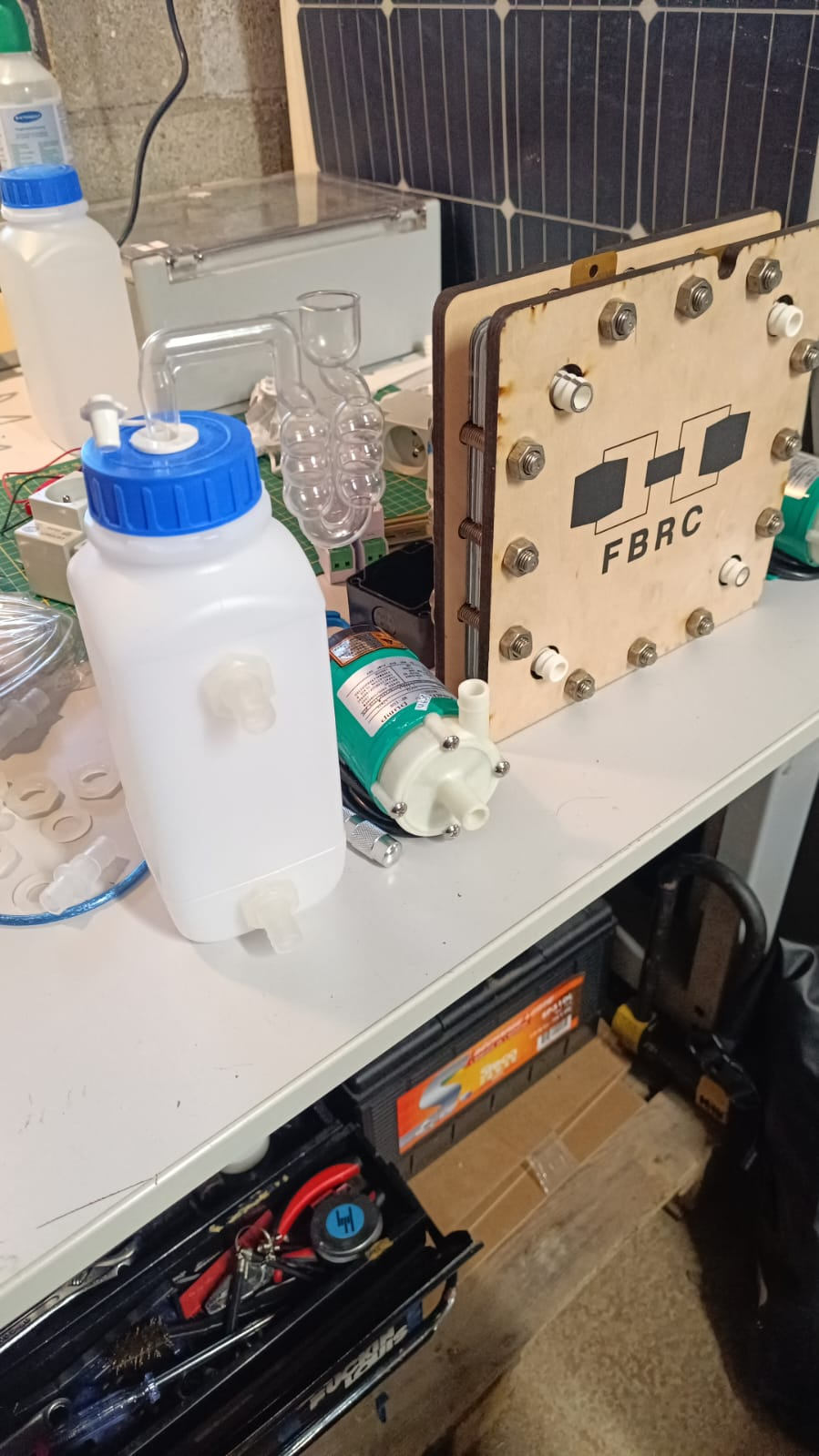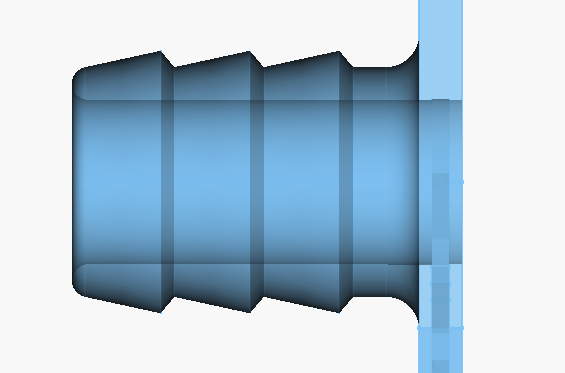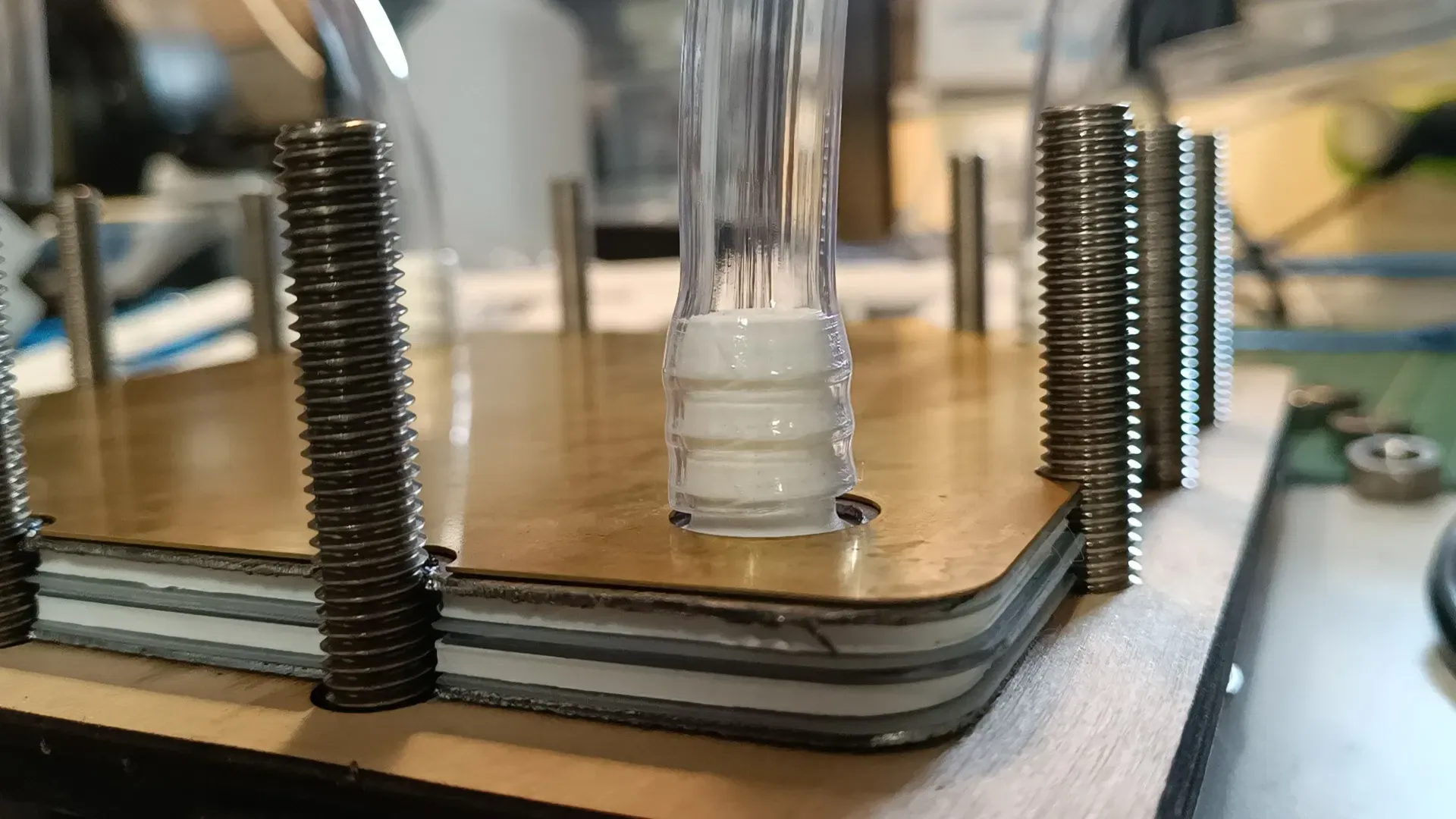This is great sepi! A calibration wizard would be excellent, thanks for taking this on. I cloned your repo and was able to launch it on my PC, happy to help test in the future!
administrators
Posts
-
MyStat control software refactor -
My build (very slowly progressing)@sepi Without the four-wire control the pump speeds are definitely harder to manage, sorry to hear that, though the PWM regulator may help. Can you visually see how different the rotation speeds are? That should be rough proxy for volumetric flowrate. I am not surprised they won't spin below 11 V.
@sepi said in My build (very slowly progressing):
Is this 20-40ml/min measured with the cell in line or just the pump.
Ideally best to measure with the cell inline, to be closer to the actual conditions. However, as the tubing wears, this can drift, just FYI. Not a huge deal but something to be aware of.
@sepi said in My build (very slowly progressing):
Is the figure obtained with water or electrolyte?
Water for now, just as a proxy, minimize exposure to electrolyte. This is kind of a 1, maybe 2 significant digit measurement, no more (the volumetric flowrate).
@sepi said in My build (very slowly progressing):
What would you recommend doing against the excess flow?
@sepi said in My build (very slowly progressing):
the left passing up to 40% more water at the same voltage.
At the same voltage, is the left pump spinning at (nearly) the same rate as the right? if they are spinning at the same rotational speed and the left is passing 40% more water, it sounds like there is some flow restriction in the right pump's flow loop. If they have identical flow loops (in terms of pressure drop), and are set at the same voltage, I would guess that they should rotate at similar speeds, but this may not be the case for the brushed motors (e.g. variance in motor properties).
What is important for testing, is that both pumps are above a minimum flowrate to ensure good mass transfer, and that the pressure imbalance between the two sides isn't too great as to cause transfer of electrolyte from one side to another through the separator. If the flowrates aren't perfectly matched but those two previous conditions are met, it's not a big issue, although it's just better for repeatability for them to be the same.
-
New member introduction thread!Hi @Santiago-Eduardo, and welcome! We'd definitely be interested in collaborating, I will reach out to you via email. Thank you for the invitation!
-
My build (very slowly progressing)Awesome news! It's true that the FDM printed flow frames are one of the biggest wildcards in this setup. Right now it seems to be trial-and-error, in the future it would be good to have a quick go/no-go test to do right after a print, without having to assemble an entire cell.
Good luck moving forward, let us know how it goes!
-
New member introduction thread!@doho said in New member introduction thread!:
I'am doho, in retirement since last year.
Hi doho, a belated welcome to the project and congratulations on your retirement! I apologize for missing your earlier post.
@doho said in New member introduction thread!:
But i noticed many companies and projects to come up and crash long time before ready to market.
This is definitely the history of most attempts at flow battery commercialization.
@doho said in New member introduction thread!:
Meanwhile I'm building your test-cell, 3D-printing is done, pumps are in loco, arduino is programmed,but I'm waiting for some other components,
especially: do you have an alternativ suggest for the tubing (I have purchase a tube TYGON LMT-55, but I'm not shure it will work).You've made a lot of progress already - I see you're in touch with sepi about the tubing, it is a rather annoying requirement. Hopefully once we have an alternative chemistry like iron, we can use easier-to-find tubing.
@doho said in New member introduction thread!:
I'm sure, for starting, when construction is more ore less finished, I will need some help of the comunity.
We will be here ready to help!
@doho said in New member introduction thread!:
I know my english is very poor, due to lack of experience in the last years, but I hope this should not be a problem.
Definitely not, there are quite a few of us with non-native English backgrounds, no worries there!
-
Updates on development kit, large-format cell, roadmapComments on the blog post at https://fbrc.dev/posts/october-2025-progress-update/
-
Designing the large-format cellHere is a video of assembling the large-format cell.
https://spectra.video/w/m9RKg1QWrFdkkn9qUBFMTS
FYI, you are meant two use two endplates per side (I used one here), I intentionally left the graphite felt out as this was for leak-testing, and the cell is missing washers on one side. The video illustrates the basic process of assembling our cell and how it is designed and seals. All the design files are available at https://codeberg.org/FBRC/RFB-large-format-cell.
The setup is essentially there, waiting on chemicals and sorting out the power electronics set up and we should be able to run our first real charge/discharge tests with this large-format cell!
The work to get to this point has been supported by the NGI0 Entrust Fund, a fund established by NLnet, to whom we are very grateful!
-
Designing the large-format cellIn preparation for cycling with ~1 L quantities of electrolyte, I have also sourced a makeshift fume extractor that I will place over the assembly during cycling to vent to the outside.
I also have obtained a combination pH/conductivity probe to characterize the prepared electrolytes and assist us with modeling (once the chemicals arrive...).
-
Designing the large-format cellUpdate after some work!
I have built the test bench, although there remains some work to do. Unfortunately, I haven't been able to perform any charge-discharge cycling yet, as a large order I had of chemicals and plumbing fittings I ordered almost 6 weeks ago (from the Netherlands, and going to France) hasn't shipped yet. Nevertheless, I have been able to make progress in the meantime in preparation for their arrival.
The large-format cell arrived from Daniel in the mail, and I got it connected to the centrifugal pumps I had waiting.
Plumbing
I fabricated some reservoirs out of off-the-shelf laboratory containers and bulkhead fittings (1/2" or ~12 mm size), all polypropylene. I just drilled holes into the containers (a step drill bit is great for drilling the thin plastic containers). I didn't need any adhesive or melting to seal the fittings, the provided silicone gaskets worked well (though time will tell if they stand up to charged triiodide solution.) I am using only 1 L containers right now to keep the volume to a minimum; this setup can also work with larger reservoirs.

I also mounted home-brewing grade airlocks to the tops of the reservoirs, the idea is to keep the reservoirs at ambient pressure and also monitor if there is any gas formation (we can remotely monitor with a webcam or similar). If accidentally we make some hydrogen, for example, we want it to vent immediately instead of building up pressure. The airlocks are empty right now since I was not doing any charge/discharge testing.
Here is a video of water running through the flow loop: https://spectra.video/w/69m6bYX3ym3rQQuz7hQk5t
Right now, we are using barbed connections everywhere, and it seems to be working. 1/2" PVC tubing was used for all connections. This tubing was too thin though, and easily kinked. It was also very hard to repeatedly take on/off from all the fittings. Hopefully the all-iron chemistry will allow us to use tubing that's easier to work with, like silicone. Also, this is more of a problem for testing, and not long-term usage. It's great that simple barbed fittings are working for now since they are simple, cheap, and printable.
Here is the current barb design for the flow frames:


Power Electronics
As you can see in the video I have all the relevant electronics connected for controlling the pumps, though it's not yet DIN mounted in the electrical cabinet. I am working with mains (240 V) AC, so I have installed a circuit breaker and emergency stop, and plan to mount everything inside the cabinet once the configuration is final. There is a Shelly energy monitor connected that monitors the power consumption of the pumps; it also provides a relay output that can switch the pumps. I am able to remotely stop/start the pumps with this setup, which is great, and it should be trivial to allow, say, the OwnTech board to adjust the pump speed and monitor the pumps power consumption. With this, we will be able to get a better idea of what system level efficiency looks like. These pumps (Haiyi MP-6R / 10RN, also see this), or similar - confused on the branding) were drawing about what they said on the datasheet, a little over 6 W each.
The concept I had planned for the charge/discharge tests still looks like it should work, but there is more development effort to use the OwnTech board than I had planned on. See the discussion I've been having at https://forum.owntech.org/t/fbrc-flow-battery-power-electronics-and-pump-motor-control/14. I need to change some variables in the PID loops of the standard boost/buck converter programs to control for I_low or I_high, rather than V_low and V_high (ie, to convert from potentiostatic to galvanostatic mode, constant-voltage to constant-potential). This seems easily possible but it's going to take a bit longer than I'd imagined because I'll need to debug it, likely working with some existing batteries like lead-acid first before switching to use our cell. I have gotten the OwnTech board and associated software working though, and it seems like a great platform to use for the project going forward.
In the meantime I can use a MightyWatt electronic load + a laboratory power supply that I already have, that is in the process of being sent back to me in the mail.
Cell Assembly
The basic principle we have to seal the cell works. It is essential to use two 12mm endplates on each side in order to achieve adequate sealing. A single 24 mm endplate would also work, but we weren't able to source this.
Notes:
- Separator needs to have smaller holes for the ports, to match the gaskets
- Thicker PVC tubing needed to avoid kinks, tubing is hard to work with. All-Fe chemistry may allow for easier tubing (e.g. silicone)
-
Following your documentation – feedback & questions@gus said in Following your documentation – feedback & questions:
I’ve returned to testing the flow cell and even built a second one to check repeatability. I’m wondering what could cause such a large difference in performance between them.
Hey, welcome back! As sepi said, please upload the correct firmware to the MYSTAT as an outdated version was previously present in the repo, also be sure to recalibrate your MYSTAT before cycling again, this is likely the source IMO. It wouldn't be bad to add some sort of calibration reminder/routine into the MYSTAT software...
@sepi said in Following your documentation – feedback & questions:
Good luck with your further investigations! You might want to rzun your future experiments in a transparent PP box in the future. I will for sure once I'm ready for actual electrolyte.
Definitely a good idea!
@gus said in Following your documentation – feedback & questions:
The next day, when I returned to the workshop, both tubes from the pumps had detached from the cell, and the electrolyte had spilled on the table.
Do you have any idea what might have happened?Ah shoot, sorry to hear this. I suspect if the MYSTAT was out of calibration it may have caused issues with the cycling. An issue with the iodide-containing chemistries is possible clogging of the felts with iodine if something goes wrong; normally the triethylene glycol should prevent this by forming a soluble complex, but it's possible your system got outside the normal operating range. I'd try again fresh (in a PP box/spill tray/secondary containment), with a calibrated MYSTAT running the latest firmware. Tagging @danielfp248 in case he has any suggestions.
